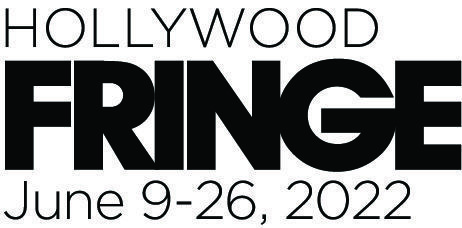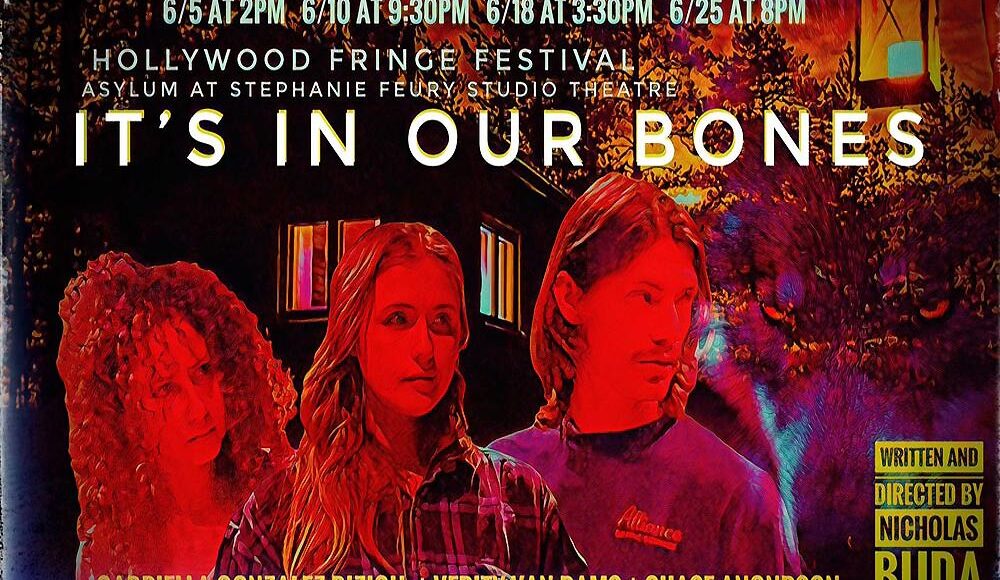By Ernest Kearney — With It’s In Our Bones, Nicholas Buda has penned an interesting little drama that he has managed to obscure with the unnecessary intrusion of… well, let’s just call it “more stuff.”
At the core of his short drama are two sisters (Gabriella Gonzalez Biziou and Verity Van Dams) trapped in a cabin confronting each other with their history of antagonistic disregard as outside in the night is heard the baying of wild wolves.
This is a workable concept, in which Buda shows a strong ear for dialogue.
The trouble begins when Buda forgets the two laws of the “elevator play” genre.
1) You don’t let anybody out.
2) You don’t let anybody in.
Buda has conceived a very forthright and very strong initial concept. Two sisters trapped by their bitter internal history, trapped by wild wolves outside.
Buda has extended the time frame of his piece over a series of nights, (this might have been workable) during which he introduces the allure of the wolves being experienced by one of the sisters (Biziou) as well as the beguiling story of a deceased brother. Again, these additional aspects might have been feasible within the context of his play.
It is the intrusion of a third character, Duke (Chase Anondson) where the trouble begins.
Now in the roles of the two sisters, Buda has managed to score a pair of solid actresses, especially in Biziou whose work is exceptional. However, with Anondson the energy established between the two sisters is undercut. Anondson isn’t a strong enough actor —unlike Biziou and Van Dams— to rise above the limitations of Buda’s script. Also, to Anondson’s disadvantage, the role of the “mysterious stranger” reveals Buda’s writing at its weakest.
It is here where Buda’s play, which he also directs, goes off track. We aren’t given an understanding of the deceased brother’s part within the sister’s conflict or why this stranger has shown up so unexpectedly. Suddenly the audience is confused, and confusion always leads to disinterest.
But for the effort and the potential a
SILVER MEDAL

It’s In Our Bones
played at Hollywood Fringe Festival 2022

For Additional Information Go To:
www.hollywoodfringe.org/projects/7454
***





